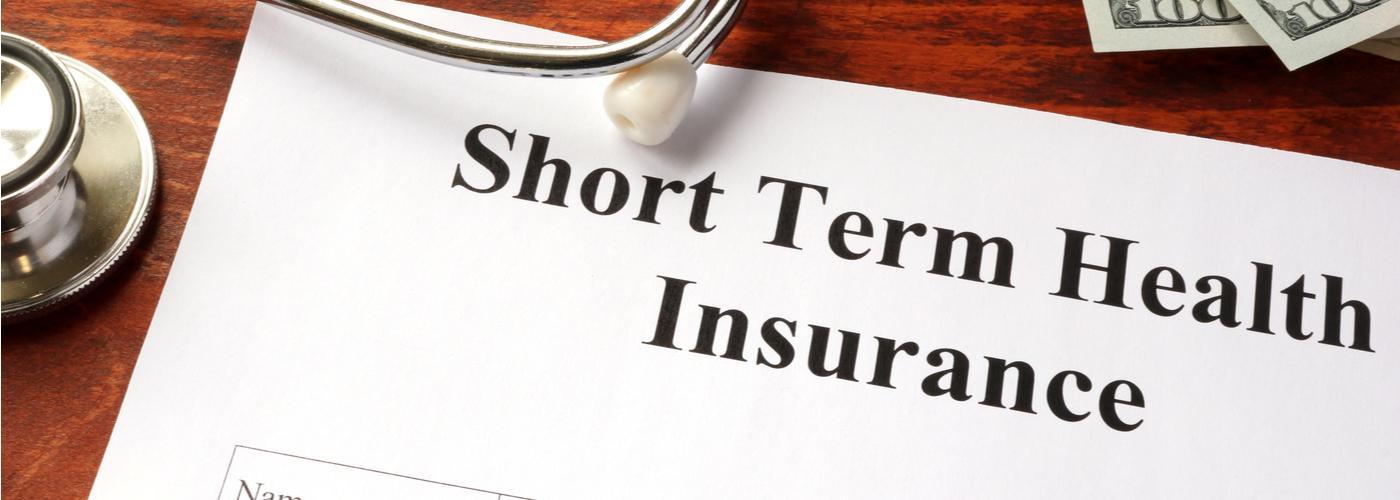According to the US Census Bureau, 27.5 million Americans had no health insurance in 2018¹. Part of the reason for this is that private health insurance can be expensive. Luckily, for those who can’t afford private health insurance, missed the enrollment period, or don’t qualify for subsidies, turning to short-term health insurance plans can be a lifesaver. It provides an easy and immediate way to get covered.

We’ve created this article to help potential applicants get acquainted with short term health insurance and learn whether it is the right option for them.
90 Days of Coverage with Short-Term Health Insurance
While the major private health insurance plans cover, on an annual basis, general medical visits and expenses, short term plans are a useful but temporary solution. At the moment, applicants can expect no more than 3 months of coverage. During this time, short term health insurance will function just as the regular annual health plans would. However, once those 90 days pass, the policies expire. Keep in mind that applicants may be turned down for pre-existing issues when signing up again.
In some states, short term health insurance is renewable. Keep this in mind before signing up and check the state’s local laws to see if this might be a possibility. If so, ask the insurer whether they will allow new applications to renew. In some cases, it’s even possible to keep renewing short term health insurance for up to 3 years².
Short-Term Health Insurance Can Help Keep Money Where it Belongs
Among the most significant advantages of these short health plans is that they’re usually more affordable. Since most of them are used between two regular policies, they don’t provide comprehensive coverage, but that ends up saving additional money.
According to NPR, short-term plans can charge as little as $124 per month, while a typical health insurance policy charges almost $400³. If the applicant doesn’t have any grave health issues, there is potential to earn even more. CBS News reports that middle-aged nonsmokers, for example, can expect to pay $481 per month through the Affordable Care Act, while a short-term policy can charge only $160⁴.
Higher Deductibles Can Make Out-Of-Pocket Payments Larger
The deductible or the money needed to pay before a health insurance policy starts covering fees will be higher with a short-term plan. Some plans can start deductibles as high as $6,500, according to Consumer Reports⁵. Besides that, some procedures aren’t covered.
Covering Gaps with Short-Term Health Insurance
Despite the downsides, short-term health insurance is still a sensible choice for people who want to cover gaps between regular health plans. What’s more, it’s better to have at least some sort of coverage instead of no coverage for common issues and illnesses.
Here’s when a short-term plan makes sense:
- Waiting for new coverage to start
- In between jobs
- Uninsured, or didn’t enroll in Medicare
- Waiting for Medicare to accept the application
Get Limited Coverage with Short-Term Health Insurance
Coverage is where short-term health insurance policies fall short. The plan could have a limit on the number of doctors available or the number of prescriptions eligible, as well as how many dollars one can spend per week or month. It’s essential to read the fine print.
Here’s a list of exclusions that consistently lag with short-term policies:
- Choosing an in-network doctor might be required
- Insurance companies can deny users for pre-existing issues
- Some policies exclude sports injuries, hernias, cataracts, and injuries from intoxication
- Might not be covered for preventative care and immunization
Research Options Before Committing to a Health Insurance Plan
Short-term health insurance can be a great solution for many people who do not meet the criteria for Obamacare or Medicare, or for whom private insurance is too expensive. It is also a great alternative for those who missed the Open Enrollment period. However, before deciding on a plan, it is wise to do some independant research. The easiest way is by going online, comparing solutions, and reading up on the pros and cons.
References
[1] Edward R. Berchick, Jessica C. Barnett, and Rachel D. Upton. “Health Insurance Coverage in the United States: 2018.” United States Census Bureau, 8 November 2019. https://www.census.gov/library/publications/2019/demo/p60-267.html
[2] Louise Norris. “Is Short-Term Health Insurance Right for You?” healthinsurance.org. 14 January 2020. https://www.healthinsurance.org/short-term-health-insurance/
[3] Alison Kodjak. “Under New Rules, Cheaper ‘Short Term’ Health Care Plans Now Last Up to 3 Years.” NPR. 1 August 2018. https://www.npr.org/sections/health-shots/2018/08/01/634539877/under-new-rules-cheaper-short-term-health-care-plans-now-last-up-to-three-years
[4] Walecia Konrad. “Short-term health insurance plans: What you need to know.” CBS News. 3 August 2018. https://www.cbsnews.com/news/short-term-health-insurance-plans-alternatives-to-obamacare-aca/
[5] Nancy Metcalf. “Is ‘Short-Term’ Health Insurance a Good Deal?” Consumer Reports. 22 December 2017. https://www.consumerreports.org/health-insurance/is-short-term-health-insurance-a-good-deal/
